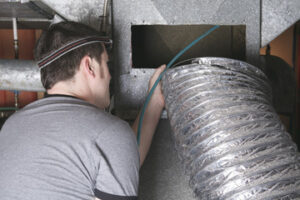Concrete Driveway Orange County offers the best of durability and design. When well maintained, these surfaces withstand the pressure of vehicles and provide a significant boost to property value.

But to reap the benefits, you should choose the right material. Read on to learn more about concrete and the specifications your contractor should follow during installation.
A concrete driveway is a major investment that improves the functionality and curb appeal of a home. However, the cost can vary considerably depending on the materials used and the labor involved. Understanding what influences the price of a concrete driveway will help homeowners determine how much they can afford.
The basic cost of a concrete driveway is $6 to $12 per square foot, but this can increase dramatically when additional elements are included. Preparation work, such as grading and removal of existing pavement, adds to the total cost. Other additions include rebar, which strengthens the concrete and increases durability, and sealant, which protects the concrete from weathering.
In addition to these costs, the contractor must make sure the subbase is sufficiently compacted and has a gravel layer to prevent heaving. Choosing the right time of year for construction is also important, as concrete sets best in temperatures between 50 and 70 degrees Fahrenheit.
It is important to settle on the dimensions of your driveway early in the process, as changing these at a later date can significantly alter the strength and durability of the concrete. The final surface should be level and flat, without any cracks or divots. A sloping surface is susceptible to water pooling, which can lead to sinkholes or undermine the structure.
If you’re looking for a concrete driveway that is both functional and visually appealing, consider adding a brick or paving stone border. This will create a beautiful contrast with the concrete and give the driveway a distinctive look. Similarly, a textured finish can be added to the concrete for a more rustic appearance.
Alternatively, you can use a stamped or stencilled concrete finish. This will cost more than a standard concrete finish, but it will offer an attractive, decorative, and slip-resistant surface.
Another option is to use air-entraining agents to strengthen the concrete and improve its resistance to freeze-thaw cycles. These additives form small, evenly distributed air bubbles in the concrete mix. This will help the concrete withstand freezing and thawing cycles, and prevent cracks and spalling in the future.
Durability
Concrete is a highly durable material that stands up well to most climate conditions, requires little maintenance, and provides a smooth driving surface. It’s also one of the more cost-effective driveway installation options available, especially when compared to asphalt and other designer materials. Furthermore, a properly installed concrete driveway can increase the property value of your home, and it’s a great option for homeowners who want to add curb appeal to their property.
A concrete driveway can be stained or colored to complement your home and landscaping, and it can also be stamped to create unique patterns and textures. Its versatility means that it can be poured to fit any curve or shape of your driveway, and you can incorporate borders and decorative elements for a truly personalized appearance.
Proper care and maintenance are essential for extending the lifespan of your concrete driveway. For instance, it’s important to avoid watering the driveway or allowing standing puddles to develop on its surface. Water can cause the concrete to deteriorate and lead to cracking and fissures. In addition, it’s a good idea to keep large trees and shrubs away from the driveway, as their roots can penetrate the concrete and cause damage.
The type of concrete used in your driveway will also impact its durability. To ensure that the concrete is strong enough to support the weight of vehicles, it’s essential to use a higher-strength mix. In addition, the contractor should reinforce the concrete with steel rebar to prevent it from cracking under pressure.
Lastly, the contractor should ensure that the concrete is water-cured for several days after it’s laid. This can be done by using a wet curing blanket or regular sprinkling to keep the surface moist. This will help the concrete to flex and resist the effects of freeze-thaw cycles, which can cause the internal pressure within the concrete to expand and crack the surface.
In addition to proper maintenance, a concrete driveway will last longer if it’s installed by an experienced and knowledgeable contractor. Make sure to ask the contractor about their experience, references, and warranty before hiring them.
Maintenance
Concrete is an excellent option for driveways, providing durability and a long lifespan. However, it’s important to keep in mind that it isn’t impervious to damage. Even the most durable material requires maintenance, and addressing small problems quickly can prevent them from becoming bigger issues. In addition to regular cleaning, you should also ensure that the surface is properly drained to avoid water damage and sinking.
If your concrete driveway is showing signs of wear and tear, it’s important to address them as soon as possible. This will help prevent cracks, fissures, and discoloration from forming. You can repair these issues with a concrete patching compound. Make sure to use a compound that is specifically designed for exterior applications, and follow the manufacturer’s instructions carefully.
It’s also a good idea to use a weed killer on your driveway, as this will help to control the growth of plants and weeds. You can also reseal your decorative concrete, which will provide additional protection against oil stains and harsh weather conditions.
Lastly, it’s important to maintain proper drainage on your concrete driveway. This will help prevent water from pooling on the surface, which can cause cracks and other damage. You can do this by ensuring that the soil is graded appropriately, and by installing drains.
A well-maintained concrete driveway can add value to your home, and it will also improve safety for you and your family by preventing slip hazards. It’s also a great way to reduce the amount of waste you send to landfills.
When choosing a concrete contractor for your driveway, it’s important to find one that is experienced and qualified. A reputable company will use quality materials and techniques to ensure that your driveway is durable and lasts for years. In addition, they will also be able to offer advice about how best to maintain your concrete driveway. They can also provide you with an estimate before starting any work. This will allow you to determine whether the cost is reasonable and affordable. This will ensure that you don’t overspend on your concrete project.
Design
Concrete driveways can be a beautiful addition to any home. They offer versatility in design and can be used with other elements to create a cohesive landscape. When compared to paver options, they tend to be less expensive and require minimal maintenance. However, they can be susceptible to cracking and stains, especially in wet weather. Additionally, concrete is susceptible to freeze-thaw cycles and requires a long curing time. Fortunately, there are ways to mitigate these issues and ensure the longevity of your concrete driveway.
Before laying a concrete driveway, homeowners should gauge the anticipated load of vehicles that will be using it. This will help determine the thickness of the slab required. Moreover, soil conditions must also be considered as different types of soil have varying characteristics that impact how the driveway performs. For example, clay soils shrink and expand with changes in moisture content and require a thicker slab to maintain stability.
Unlike the popular perception of concrete as lifeless and boring, it can be stained in a variety of colors to enhance its aesthetic. These color additives can be dusted on or mixed into the concrete during its construction to complement existing landscaping and home exterior colors. Concrete can even be blended with decorative gravel or stones for a more organic look.
Exposed aggregate concrete is another popular option for modern concrete driveways. This style allows for a more textural finish that complements both contemporary and traditional homes. It is also slip resistant and requires minimal maintenance. Concrete contractors seed pebbles, shells, and other natural materials into the concrete during construction to achieve this effect.
If you want to boost the visual appeal of your concrete driveway, consider incorporating integrated lighting. This is a growing trend that makes your driveway safer and more attractive at night. This type of lighting can be installed into the slabs or along borders of your driveway to highlight the unique design features. It can also be connected to your home automation system for convenient control. In addition, it can reduce the amount of energy your driveway consumes.


